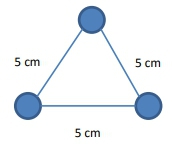Understanding the work done by electric forces is crucial in the study of electrostatics. When a charge moves within an electric field, its position relative to other charges changes, leading to variations in potential energy. This change in energy is a result of the electric force acting on the charge, which is responsible for its acceleration and movement.
The work done on a charge can be expressed using the formula: \( W = F \cdot d \cdot \cos(\theta) \), where \( W \) is work, \( F \) is the force, \( d \) is the distance moved, and \( \theta \) is the angle between the force and the direction of movement. In the context of electric forces, it is important to note that the electric force is a conservative force. This means that the work done is related to the change in potential energy, where a loss in potential energy corresponds to a gain in kinetic energy, and vice versa.
From the work-energy principle, we can derive that the work done on an object is equal to the change in its kinetic energy. This relationship can also be expressed as the negative change in potential energy: \( W = -\Delta U \). The change in potential energy for a charge moving through a potential difference can be calculated using the equation: \( \Delta U = q \Delta V \), leading to the work done being expressed as: \( W = -q \Delta V \).
For point charges, the work done when moving a charge from one point to another is given by the formula: \( W = k \cdot q \cdot Q \left( \frac{1}{r_1} - \frac{1}{r_2} \right) \), where \( k \) is Coulomb's constant, \( q \) is the moving charge, \( Q \) is the source charge, and \( r_1 \) and \( r_2 \) are the initial and final distances from the source charge, respectively. This formula accounts for the fact that the electric force varies with distance, making it unsuitable to use the standard work formula involving constant force.
In contrast, when dealing with a constant electric field, the work done can be calculated using the same formula for work: \( W = qE \cdot d \cdot \cos(\theta) \), where \( E \) is the magnitude of the electric field and \( d \) is the displacement of the charge. The angle \( \theta \) is the angle between the direction of the electric field and the direction of the displacement.
One key concept in electrostatics is path independence, which states that the work done by an electric force depends only on the initial and final positions of the charge, not the path taken to get there. This means that regardless of the route taken, the work done remains the same as long as the starting and ending points are unchanged.
As charges move far away from each other, the electric potential energy and potential approach zero, which can be observed from the equations governing electric forces. This concept is essential for understanding the behavior of charges in various configurations.
In practical applications, such as calculating the work done when moving charges in an electric field or between point charges, it is important to apply the correct formulas based on the nature of the electric field (constant or variable) and to consider the implications of the results, such as the significance of positive or negative work.


